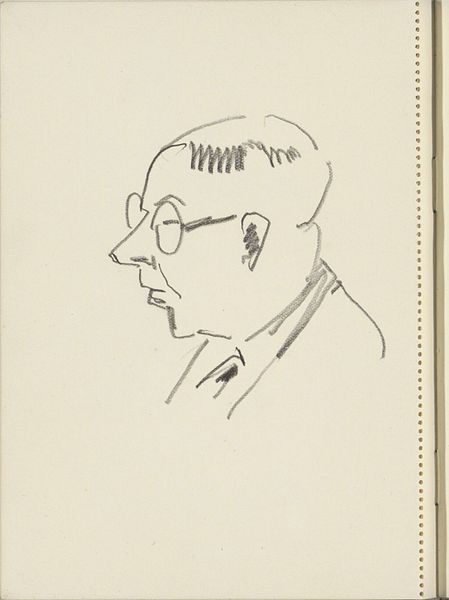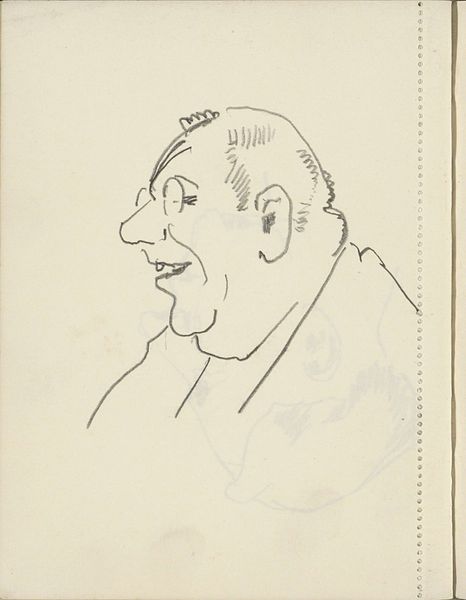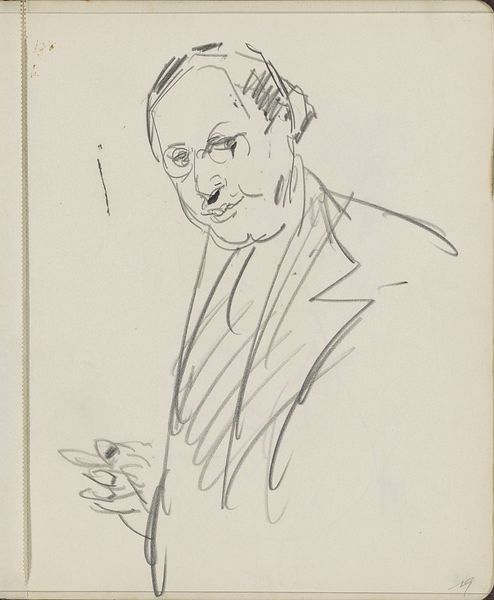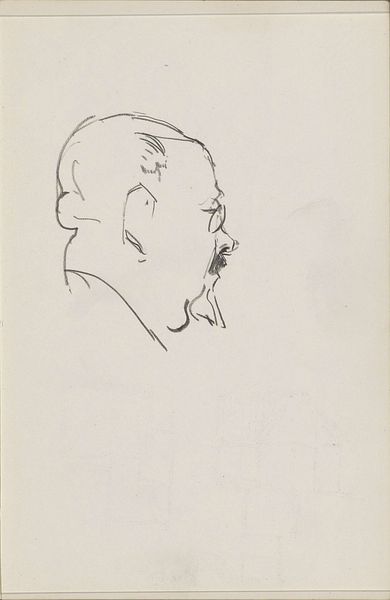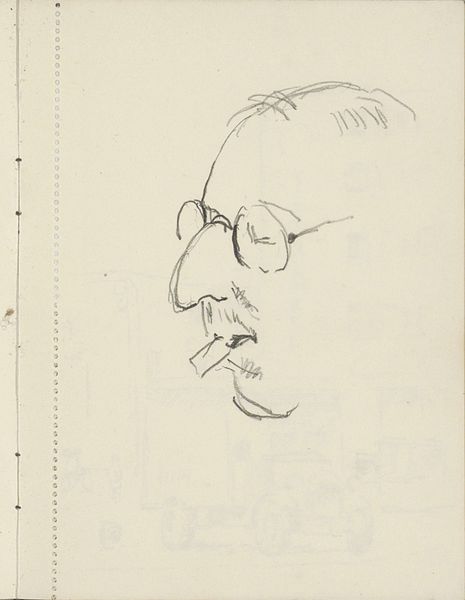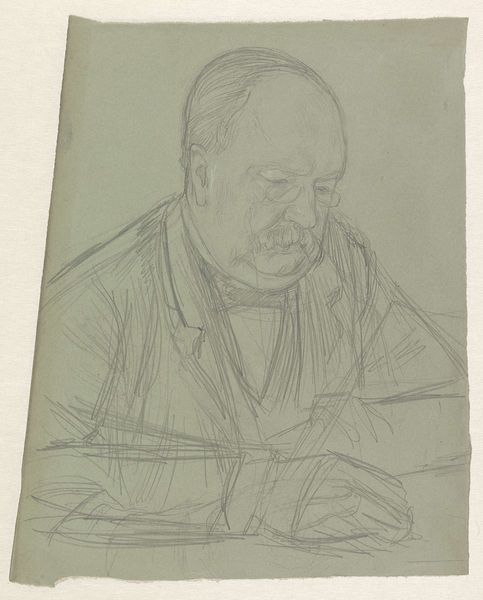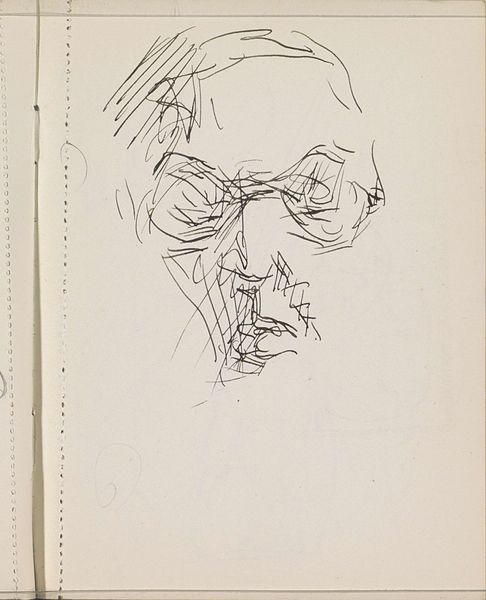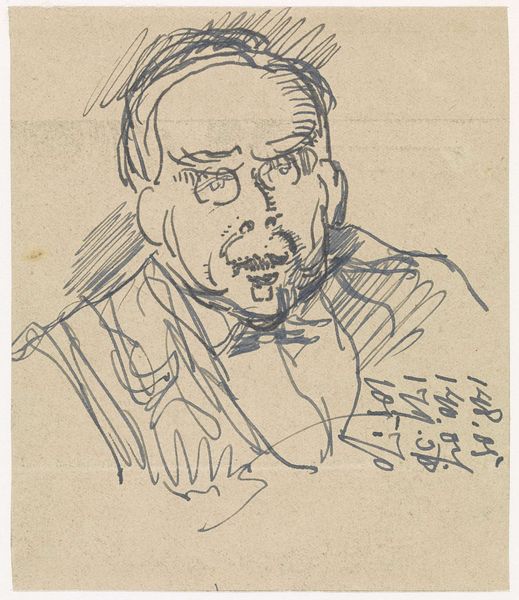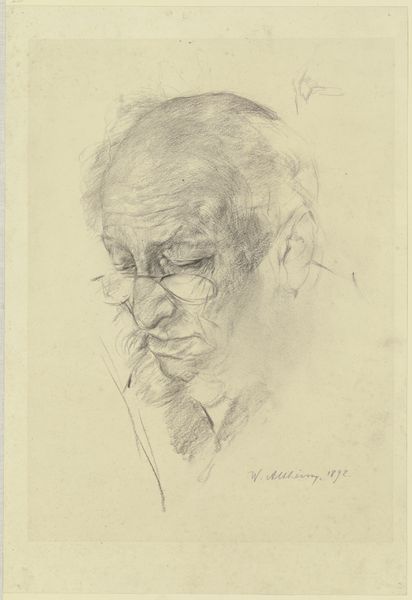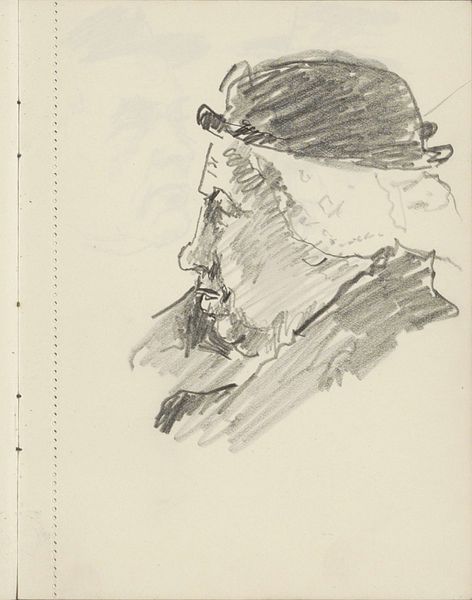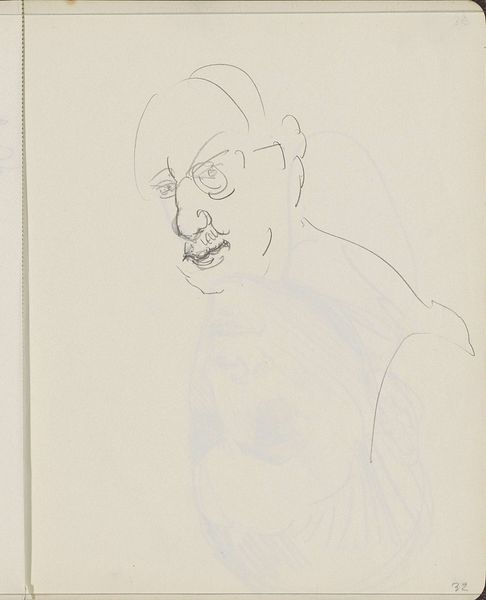
drawing, pencil
#
portrait
#
drawing
#
comic strip sketch
#
imaginative character sketch
#
cartoon sketch
#
personal sketchbook
#
idea generation sketch
#
ink drawing experimentation
#
pen-ink sketch
#
pencil
#
sketchbook drawing
#
storyboard and sketchbook work
#
sketchbook art
#
realism
Copyright: Rijks Museum: Open Domain
Editor: So, this is "Portret van een lezende man met bolle wangen," or "Portrait of a man reading with chubby cheeks," by Cornelis Vreedenburgh, made sometime between 1890 and 1946. It’s a pencil drawing currently residing at the Rijksmuseum. There's something so wonderfully informal and humorous about it. What strikes you when you look at it? Curator: What grabs me is that the casualness probably speaks to a larger trend within the history of portraiture itself, breaking free from strict, commissioned formality and capturing candid moments. The drawing feels more like a personal study, a glimpse into Vreedenburgh's observational skills rather than a piece meant for public display or even the subject's approval. How do you think this intimacy impacts our understanding of the portrayed individual? Editor: That's a fascinating point. It does feel like we're intruding on a private moment. I suppose it invites speculation – is he someone important, captured in a relaxed state, or just an anonymous figure who caught the artist’s eye? The lack of context almost democratizes the portrayal. Curator: Precisely. It makes us consider who gets represented and how. In an era increasingly shaped by mass media and evolving social hierarchies, could this type of sketch be seen as a quiet form of artistic subversion, moving away from glorifying power and towards celebrating the everyday? Think of the rise of newspapers and the hunger for images of regular people during this period. Editor: That's a really interesting connection, framing it within a shift in social and media dynamics. It definitely pushes the artwork beyond just a simple character study. Curator: Right, and maybe it prompts us to question how art institutions, like the Rijksmuseum, shape the value we ascribe to these everyday depictions in the first place. The museum elevating a simple drawing to the status of “art.” It makes one ponder, doesn’t it? Editor: Absolutely, it does change my perspective, thinking about not just the drawing itself but the whole system around it. Curator: I'm glad we were able to discuss this great work.
Comments
No comments
Be the first to comment and join the conversation on the ultimate creative platform.
